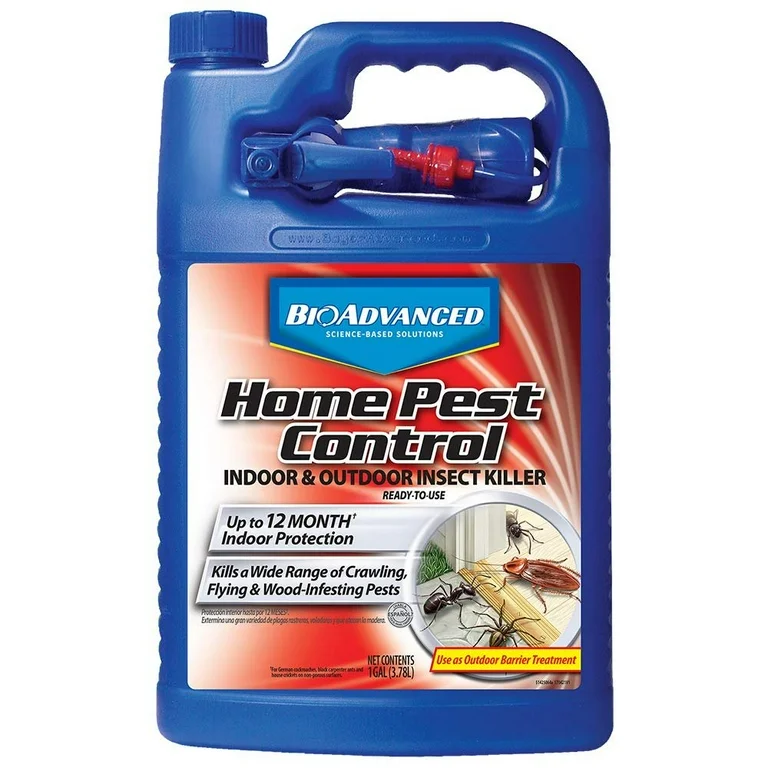Bed Insect Treatment Failure: Contrasting Chemical Vs. Non-Chemical Solutions
In the realm of insect control, specifically when taking care of the consistent problem of bed insects, the option between chemical and non-chemical treatment solutions can be an essential one. Both strategies supply distinctive advantages and drawbacks, affecting elements such as performance, security factors to consider, and overall expense. By analyzing the nuanced information of each approach, a more clear understanding of which course to pursue in resolving a bed pest invasion can be achieved.
Performance of Chemical Treatments
Chemical treatments for bed bug problems have actually been commonly recognized for their rapid and powerful efficiency in getting rid of these bugs. When considering the performance of chemical treatments, it is important to understand that they can give a fast and detailed remedy to a bed pest trouble. Professional exterminators commonly rely upon pesticides to target bed bugs at numerous stages of their life process, including fairies, grownups, and eggs. These chemicals normally work by interfering with the bed bugs' nerve system, leading to paralysis and eventual death.
Additionally, chemical therapies have the benefit of using residual results, meaning that they can remain to eliminate bed bugs also after the initial application. This recurring action is specifically useful in combating any kind of potential re-infestations. Additionally, the quick action of chemical therapies can bring alleviation to individuals encountering serious bed pest infestations, permitting them to gain back control of their space quickly.
Safety And Security Worry About Chemical Solutions
One important aspect that requires mindful consideration when making use of chemical options for bed pest treatment is making certain the security of passengers and the atmosphere. While chemical treatments can be effective in eradicating bed bugs, they might present threats otherwise taken care of correctly. One of the key safety concerns with chemical services is the potential harm they can trigger to human wellness. Exposure to certain chemicals used in bed pest treatments can bring about breathing problems, skin irritation, or various other damaging reactions, especially in individuals with pre-existing problems or level of sensitivities. Furthermore, inappropriate application or dose of chemical pesticides can result in toxic residues remaining in the cured location, posing long-term health risks to residents.
Moreover, the ecological impact of chemical remedies is one more considerable factor to consider. Some chemicals utilized in bed insect therapies may be unsafe to helpful insects, wildlife, and ecological communities if they leach into the soil or water supply. It is vital to utilize chemical therapies deliberately, complying with safety guidelines, and taking into consideration much less toxic alternatives to reduce these threats and make sure the safe and effective monitoring of bed insect invasions.
Benefits of Non-Chemical Approaches
Taking into consideration the prospective security issues and environmental effect connected with chemical options for bed insect therapy, exploring non-chemical methods offers a promising option with numerous distinct advantages. Non-chemical treatments Clicking Here are eco friendly, as they do not add to air or water contamination, making them a lasting choice for parasite control.
In addition, non-chemical options can be efficient in targeting bed bugs, consisting of hard-to-reach areas where chemical therapies might not penetrate - A1 bed bug exterminator charlotte. Techniques such as heat treatment, vacuuming, steam cleansing, and mattress coverings provide complete obliteration without the usage of hazardous chemicals.
Limitations of Non-Chemical Treatments

In addition, non-chemical treatments frequently require several applications to attain successful removal. This can be taxing and might not constantly guarantee full removal of all bed bugs and their eggs, particularly in hard-to-reach or concealed places.
Additionally, the success of non-chemical treatments greatly counts on appropriate execution and thoroughness, which can be testing for people without professional know-how. Insufficient application of non-chemical methods might cause insufficient eradication, causing relentless problems and the need best indoor termite treatment for extra therapies.
As a result, while non-chemical treatments have their advantages, it is his explanation necessary to recognize these constraints and consider them when establishing one of the most reliable approach for handling bed bug problems.
Cost Contrast: Chemical Vs. Non-Chemical Options
Offered the restrictions associated with non-chemical treatments, a vital facet to examine in the context of bed bug administration is the cost comparison between chemical and non-chemical alternatives. In contrast, non-chemical therapies like heat therapy or vapor can be much more expensive, with prices varying from $1,000 to $6,000 for an entire home. While the first expense of chemical therapies might appear lower, numerous treatments may be needed to completely eradicate the invasion, possibly boosting the overall price.
Verdict

Thinking about the possible security problems and environmental impact linked with chemical remedies for bed pest therapy, checking out non-chemical methods offers a promising alternative with several unique benefits.Offered the constraints connected with non-chemical treatments, a necessary facet to evaluate in the context of bed bug monitoring is the price comparison in between chemical and non-chemical options. In contrast, non-chemical treatments like warmth therapy or vapor can be more pricey, with prices ranging from $1,000 to $6,000 for an entire home. While the preliminary expense of chemical therapies may seem reduced, multiple treatments may be required to completely get rid of the infestation, potentially raising the general price.In conclusion, when contrasting chemical and non-chemical bed insect therapy options, it is important to take into consideration efficiency, safety and security, benefits, limitations, and cost.
Comments on “Experienced A1 Exterminators Charlotte NC - Rapid and Reputable Solutions”